Possible recent lunar volcanism |

Possible recent lunar volcanism |
 Oct 13 2014, 09:23 PM Oct 13 2014, 09:23 PM
Post
#1
|
|
 IMG to PNG GOD     Group: Moderator Posts: 2254 Joined: 19-February 04 From: Near fire and ice Member No.: 38 |
This is very interesting - and unexpected (at least to me):
http://lroc.sese.asu.edu/posts/818 Apparently there may be small features of volcanic origin on the Moon that are less than 100 million years old. The images are also very interesting - I would probably never have guessed that the image at the top was of lunar terrain. |
|
|
|
 |
 Feb 15 2019, 08:01 PM Feb 15 2019, 08:01 PM
Post
#2
|
|
 Junior Member   Group: Members Posts: 31 Joined: 24-February 17 From: California Member No.: 8127 |
Hi everyone,
The colors shown by Neil Spence are mostly true, although overly enhanced in terms of saturation and contrast. The upshot is that the floor of the Ina caldera does have a distinctly blue color. Ina's blue hue is confirmed by the LRO's WAC camera, and is confirmed by even the most basic color balancing techniques which one would use for the Apollo 17 Hasselblad photographs of Ina. Amazingly, a couple of the best ground based photographs of the moon taken by amateur astronomers show Ina as only a few pixels in size, yet with a distinctly blue color. The floor of the Ina caldera is comprised of approximately 10% titanium dioxide in the form of ilmenite. This explains the blue hue for Ina's lower units since TiO2 is a very blue mineral. The eastern areas of the floor exhibit very little heiligenschein in comparison to the mounds and to the surrounding terrain. This alone suggests that parts of the floor in the caldera are very young. TiO2 map of Ina and the surrounding region: 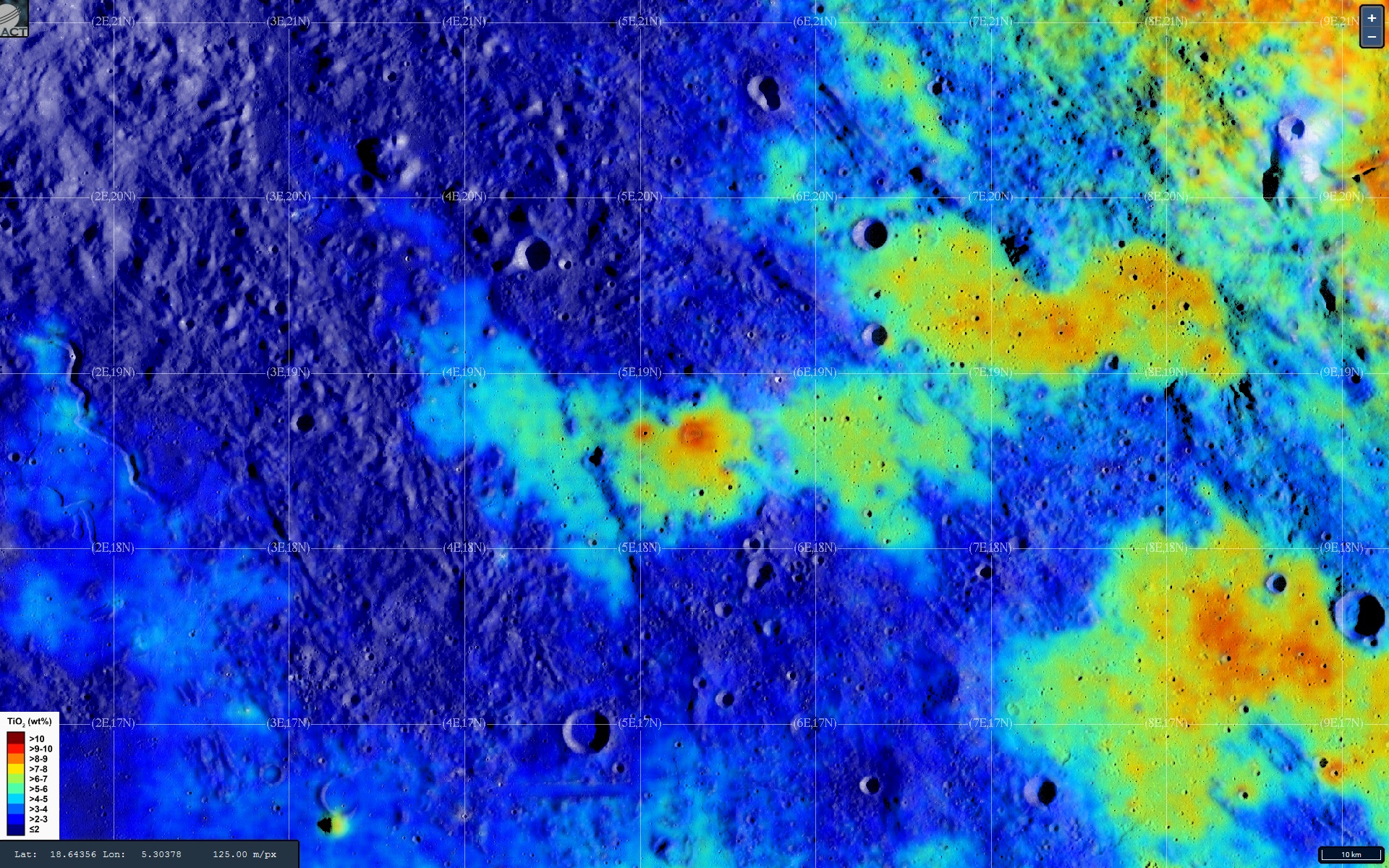 Photograph AS17-152-23287: 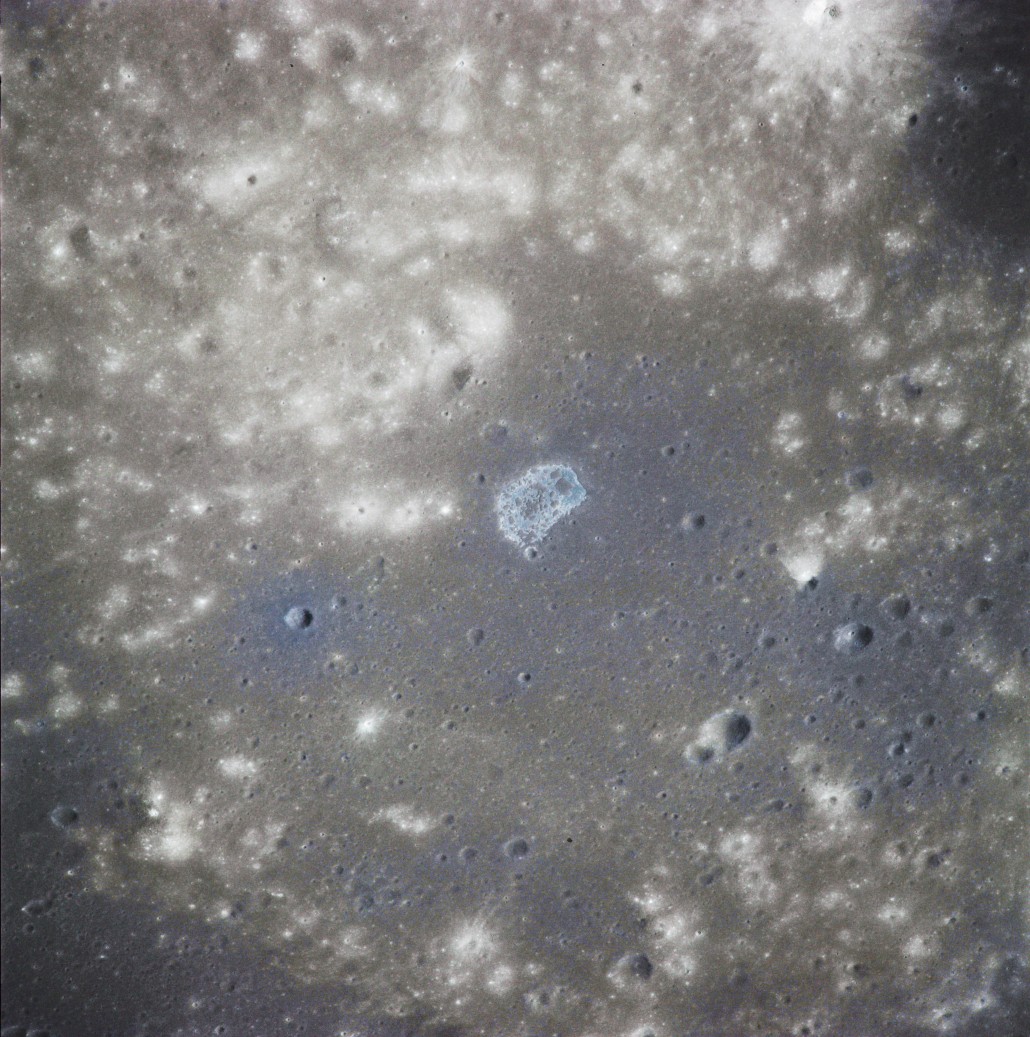 Photograph AS17-152-23287 aligned and overlaid on top of LRO image M119815703LCRC. This is what Ina really looks like: 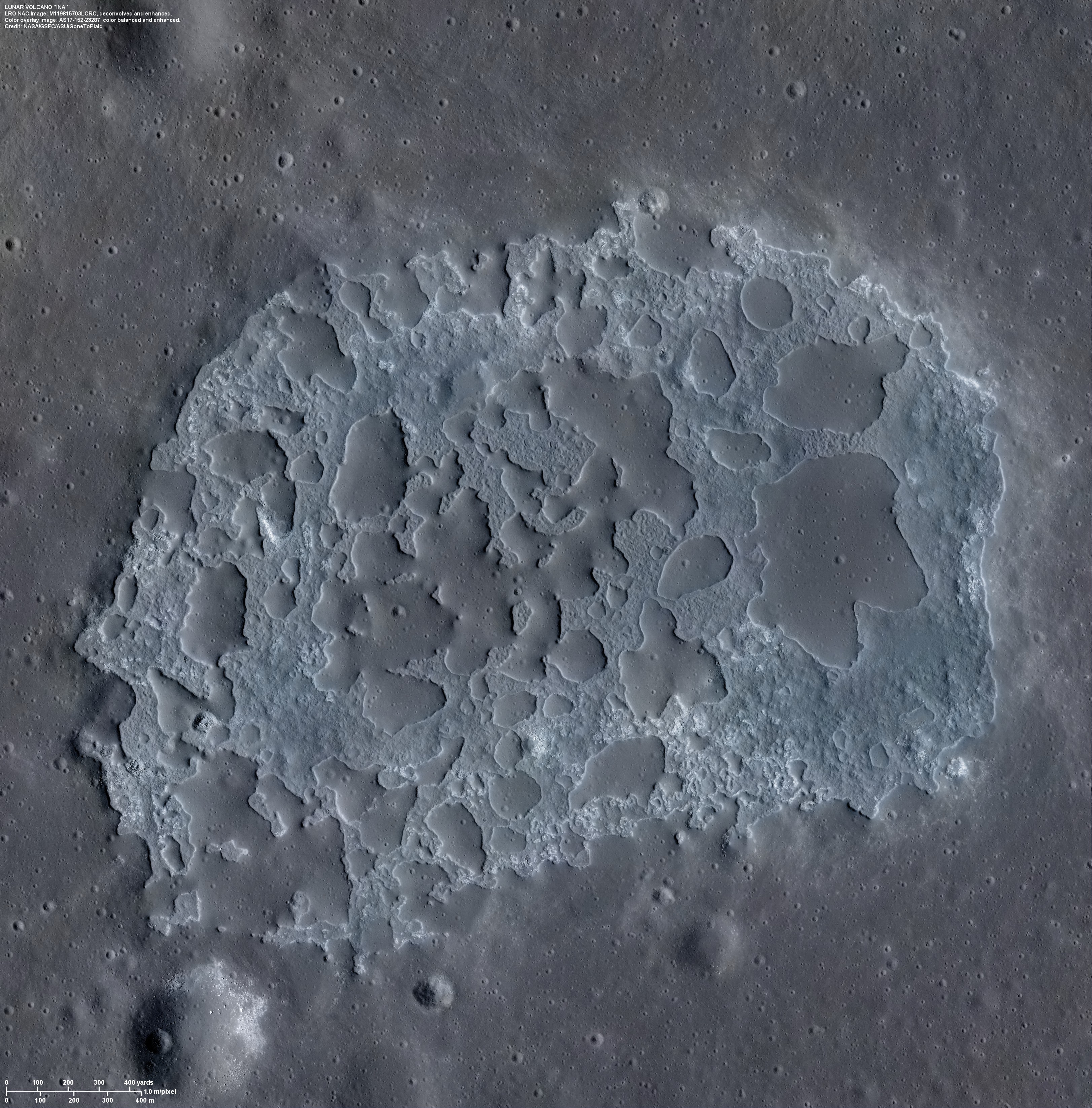 Photograph AS17-153-23577: 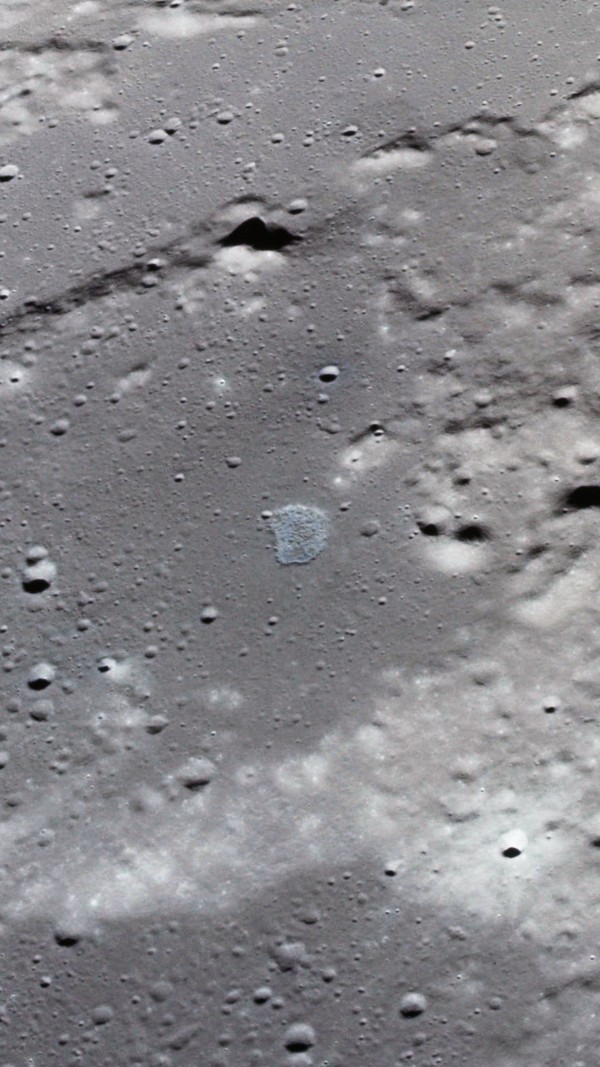 Photograph AS17-153-23578: 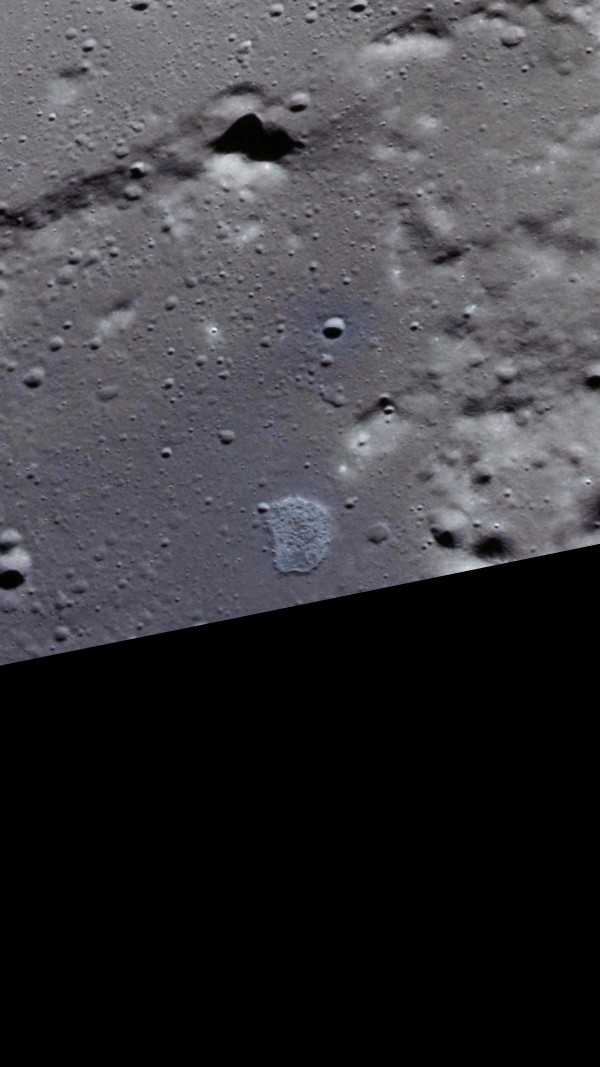 The large central mound is Agnes. Agnes is located on the eastern portion of the Ina caldera. Note the cratering on Agnes. Now note the general lack of any significant cratering on the foamy lava floor which surrounds Agnes. In fact, nearly all of the extremely tiny craters seen on the foamy lava floor actually contain a tiny boulder. 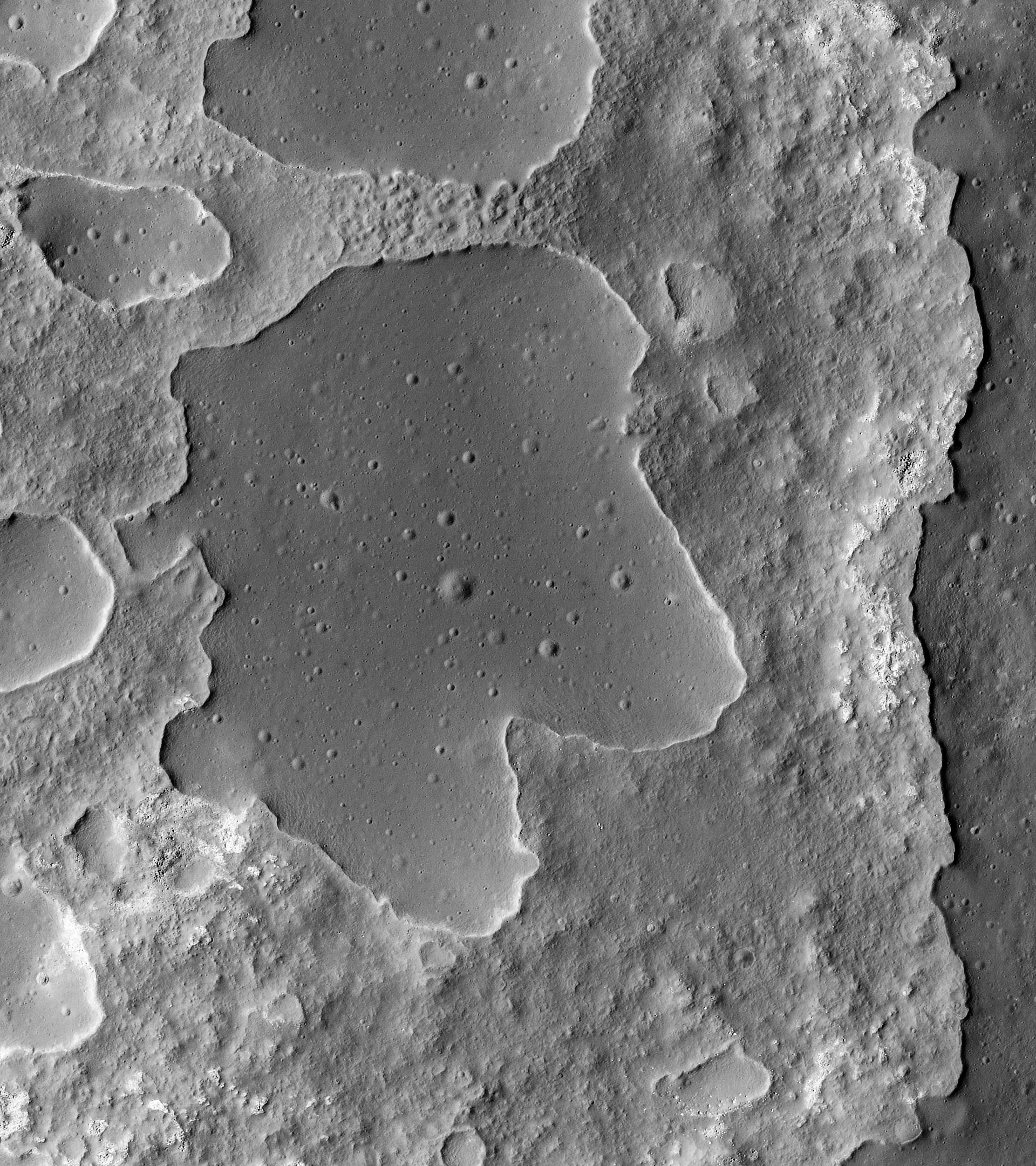 I hope that you enjoyed viewing these photos. Best regards, --GTP |
|
|
|
 Bjorn Jonsson Possible recent lunar volcanism Oct 13 2014, 09:23 PM
Bjorn Jonsson Possible recent lunar volcanism Oct 13 2014, 09:23 PM
 nprev I see gross similarities with some purported Mercu... Oct 13 2014, 09:45 PM
nprev I see gross similarities with some purported Mercu... Oct 13 2014, 09:45 PM
 Phil Stooke You saw it here first:
http://www.unmannedspacefl... Oct 13 2014, 10:44 PM
Phil Stooke You saw it here first:
http://www.unmannedspacefl... Oct 13 2014, 10:44 PM
 wildespace Ah, glad I found this thread, as I've just com... Oct 20 2018, 10:44 AM
wildespace Ah, glad I found this thread, as I've just com... Oct 20 2018, 10:44 AM
 Phil Stooke First, let me assure you there are no blue mineral... Oct 20 2018, 05:53 PM
Phil Stooke First, let me assure you there are no blue mineral... Oct 20 2018, 05:53 PM
 monty python It's kinda weird still. Are the light areas de... Oct 21 2018, 05:46 AM
monty python It's kinda weird still. Are the light areas de... Oct 21 2018, 05:46 AM

 wildespace QUOTE (monty python @ Oct 21 2018, 06:46 ... Oct 22 2018, 03:19 PM
wildespace QUOTE (monty python @ Oct 21 2018, 06:46 ... Oct 22 2018, 03:19 PM
 John Moore As to how Ina was made, and indeed other IMPs (Irr... Oct 22 2018, 05:18 PM
John Moore As to how Ina was made, and indeed other IMPs (Irr... Oct 22 2018, 05:18 PM
 Phil Stooke I was just enjoying the very interesting post by G... Feb 23 2019, 08:37 PM
Phil Stooke I was just enjoying the very interesting post by G... Feb 23 2019, 08:37 PM
 GoneToPlaid QUOTE (Phil Stooke @ Feb 23 2019, 12:37 P... Feb 24 2019, 06:07 AM
GoneToPlaid QUOTE (Phil Stooke @ Feb 23 2019, 12:37 P... Feb 24 2019, 06:07 AM  |

|
Lo-Fi Version | Time is now: 24th September 2024 - 05:30 AM |
|
RULES AND GUIDELINES Please read the Forum Rules and Guidelines before posting. IMAGE COPYRIGHT |
OPINIONS AND MODERATION Opinions expressed on UnmannedSpaceflight.com are those of the individual posters and do not necessarily reflect the opinions of UnmannedSpaceflight.com or The Planetary Society. The all-volunteer UnmannedSpaceflight.com moderation team is wholly independent of The Planetary Society. The Planetary Society has no influence over decisions made by the UnmannedSpaceflight.com moderators. |
SUPPORT THE FORUM Unmannedspaceflight.com is funded by the Planetary Society. Please consider supporting our work and many other projects by donating to the Society or becoming a member. |

|